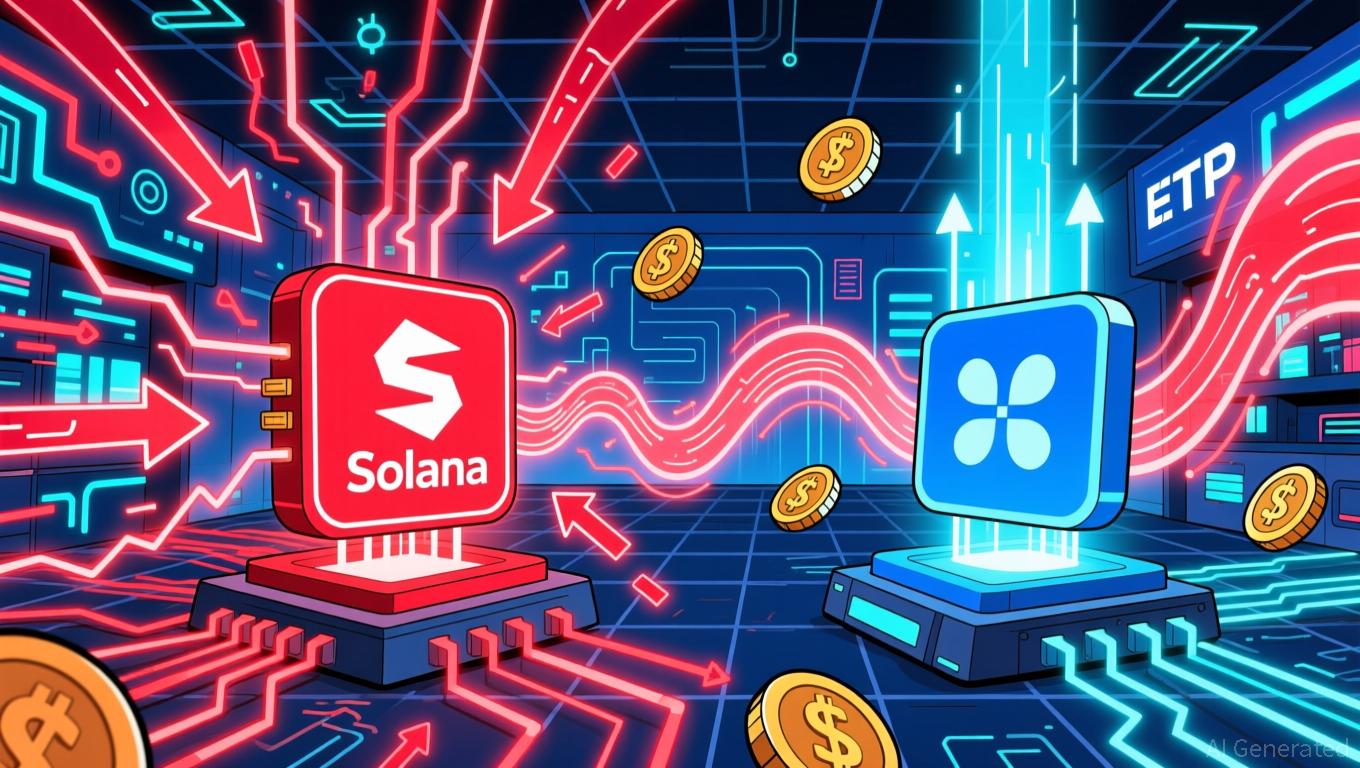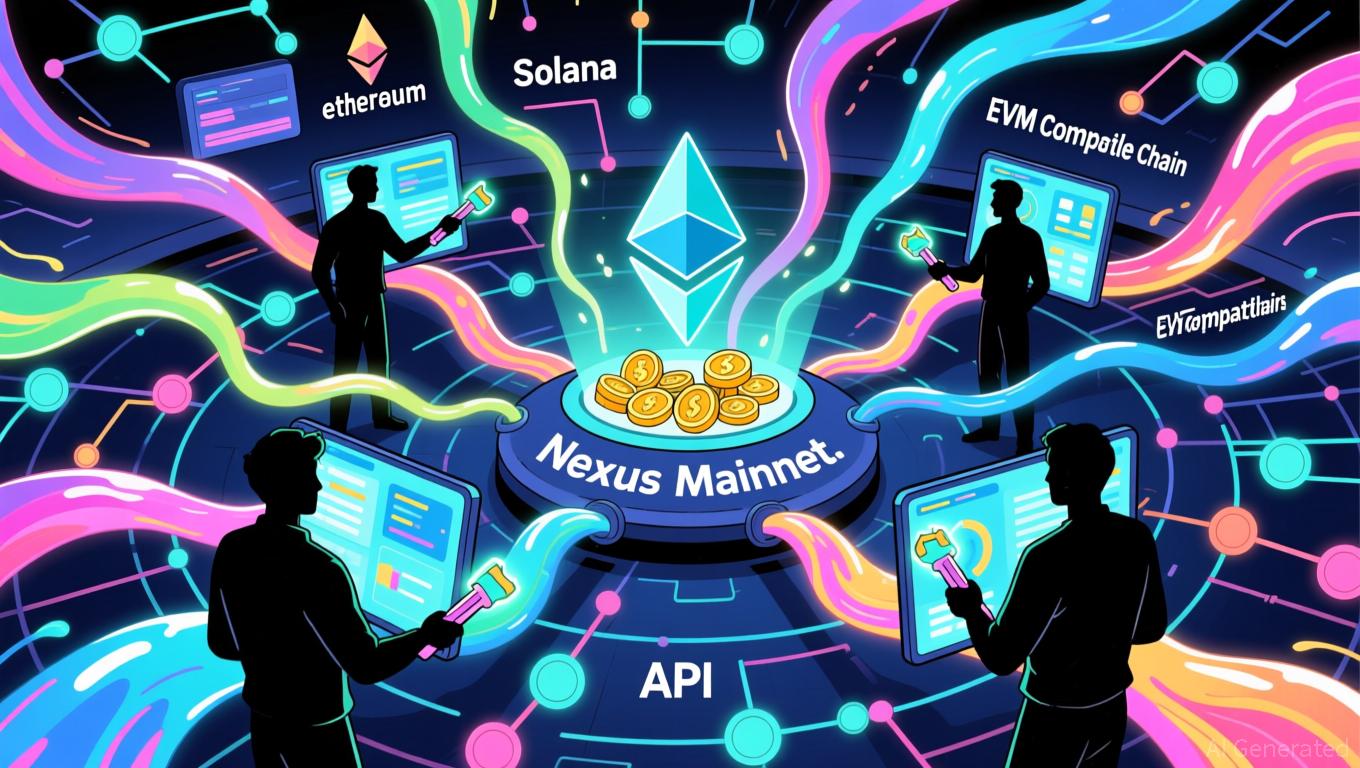Chery’s Worldwide Manufacturing Approach Counters Tariff Barriers, Drives Historic Hong Kong IPO
- Chery Automobile raised HK$9.1B in its 2025 Hong Kong IPO, priced at HK$30.75/share, with shares surging 11% to HK$34.2. - Funds will allocate 35% to R&D, 25% to next-gen tech, and 20% to overseas expansion, reflecting its global market focus. - As China's top car exporter since 2003, Chery exported 40% of 2024 production, expanding into Europe, UK, and mitigating U.S./EU EV tariffs via local Middle East manufacturing. - Its 32.3% YoY export growth and diversified strategy, including fuel-powered vehicle

Chery Automobile, China’s leading vehicle exporter, saw its shares jump by 11% during its first day of trading on the Hong Kong Stock Exchange on September 25, 2025. The company raised HK$9.1 billion (about $1.2 billion) through its IPO, which was set at HK$30.75 per share. This offering stands as the largest automotive IPO in Hong Kong for the year. Chery’s stock ended the day at HK$34.2, valuing the company at HK$197.2 billion. The initial listing event was postponed due to Super Typhoon Ragasa, which forced the cancellation of the ceremony. Chery plans to allocate the IPO funds to research and development (35%), next-generation technology (25%), and international expansion (20%), highlighting its commitment to growing its global presence title1 [ 1 ].
Since 2003, Chery has led China’s auto export rankings, and in 2024, it shipped 1.14 million vehicles overseas—representing 40% of its total output—outpacing competitors such as BYD and Great Wall Motor. Its Jetour SUV brand is preparing to launch in Europe this November, while the Omoda line is targeting markets in the UK and Australia. By expanding into regions like Vietnam, the Middle East, and Southeast Asia, Chery has reduced its exposure to global trade restrictions, including the 100% tariffs imposed by the U.S. and EU on Chinese electric vehicles. Establishing manufacturing operations in areas such as the Middle East allows Chery to bypass export taxes and maintain an advantage over rivals that still rely on production in China title2 [ 2 ].
China’s car exports have risen sharply, with forecasts suggesting the country could account for 30% of worldwide car sales by 2030, up from 21% in 2024. In August 2025 alone, Chery sold 242,736 vehicles, exporting 129,472 of them—an increase of 14.6% and 32.3% year-over-year, respectively. This growth mirrors a larger trend of Chinese automakers gaining ground in emerging markets, where cost-effectiveness and localized production are key drivers. For instance, in the first two months of 2025, Chinese brands made up 35.6% of the nation’s 1.32 million car exports, with Chery responsible for 25% (117,719 units) of that figure title8 [ 3 ].
Nonetheless, trade restrictions remain a major hurdle. The EU and U.S. have introduced tariffs as high as 45.3% and 100% on Chinese electric vehicles, and Canada followed suit with similar measures in 2024. Despite these obstacles, Chery’s approach—emphasizing local production and a product mix that favors fuel-powered cars—has helped shield it from the most severe effects. According to Tu Le of Sino Auto Insights, Chery’s global manufacturing network is “the envy of many Chinese EV makers,” especially as it gains momentum in markets like the UK and Australia title1 [ 4 ].
The strong performance of Chery’s IPO reflects investor optimism about the company’s future, particularly in regions more receptive to Chinese exports. Experts point to Chery’s affordable vehicle lineup and strategic alliances with firms like Huawei and Alibaba as major strengths. Meanwhile, the broader Chinese automotive sector is facing consolidation as trade barriers and excess capacity put pressure on the industry. Chery’s ability to overcome these challenges while expanding internationally positions it as a key force in transforming the global auto market title7 [ 5 ].
Disclaimer: The content of this article solely reflects the author's opinion and does not represent the platform in any capacity. This article is not intended to serve as a reference for making investment decisions.
You may also like
Ethereum News Update: Amundi’s Integrated Approach Connects Blockchain with Conventional Financial Regulations
- Amundi, Europe's largest asset manager, launched its first Ethereum-based tokenized money-market fund, enabling 24/7 settlements and transparent record-keeping via blockchain. - The hybrid model, developed with CACEIS, combines traditional fund operations with blockchain-based ownership, preserving regulatory compliance while expanding investor access. - Ethereum's dominance in stablecoin and RWA transfers ($105.94B in 30 days) underscores its role in accelerating tokenization, with Amundi positioning it

XRP News Today: XRP ETFs Drive Price Increases, While Solana ETFs Ease Selling Pressure
- XRP ETFs raised $587M in inflows since late November, outpacing Solana's $568M as investors favor altcoins with regulatory clarity and utility. - Bitwise XRP ETF's $107M debut and zero-fee strategy drove momentum, while Solana ETFs faced $156M weekly outflows due to network reliability concerns. - XRP's inflows acted as a "battering ram" pushing prices above $2.27, contrasting Solana's ETFs which merely dampened sell pressure without reversing its decline. - Analysts predict XRP could reach $3 by Decembe

The Federal Reserve's Change in Policy and Its Impact on Alternative Cryptocurrencies Such as Solana
- Fed's 2025 policy shifts, including rate cuts and stablecoin regulations, are reshaping altcoin markets by altering liquidity and risk appetite. - Solana's Alpenglow upgrade (150ms finality, 1M TPS) addresses scalability issues, aligning with Fed's AI-driven infrastructure focus despite network reliability concerns. - Institutional inflows into Solana ETFs ($100M AUM) contrast with retail caution (78% HODLers in red), highlighting divergent risk perceptions amid 30% price corrections. - Divergent ETF flo

Avail's Intent-Driven Nexus Addresses the Issue of Fragmented Liquidity Across Chains
- Avail launches Nexus Mainnet, a cross-chain solution unifying liquidity across Ethereum , Solana , and EVM networks. - The intent-solver model enables seamless asset transfers without technical complexities, streamlining user experiences. - Developers gain modular tools for multichain integration, reducing costs as cross-chain liquidity demand grows. - Nexus abstracts execution layers, offering unified balances and execution while addressing fragmentation challenges. - With $50B+ in cross-chain activity
